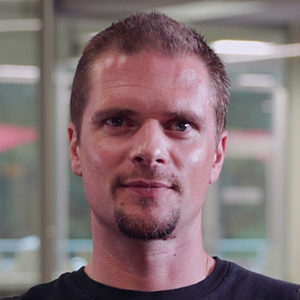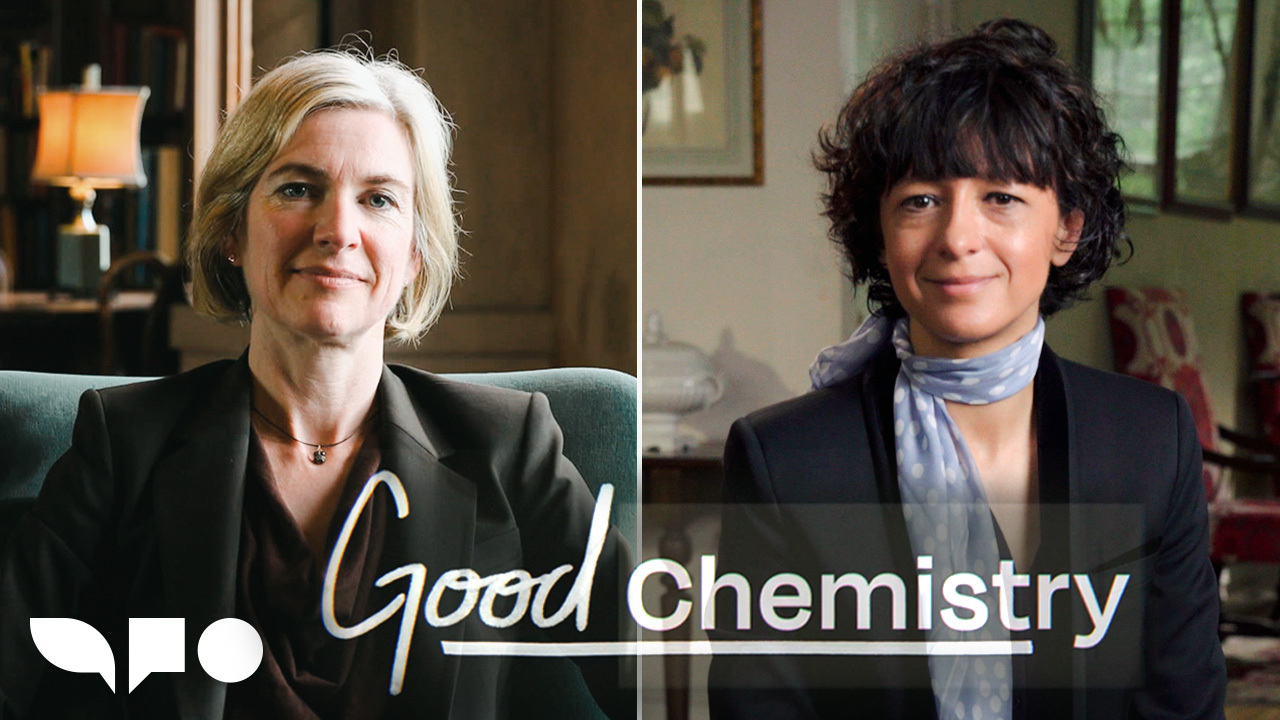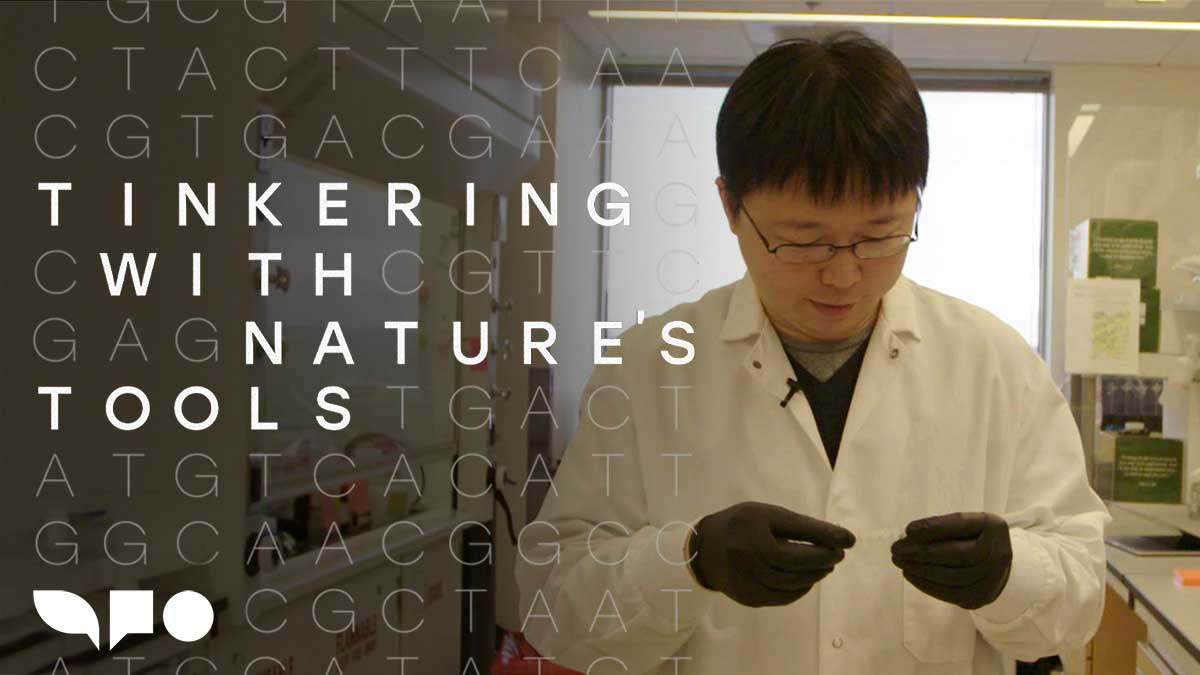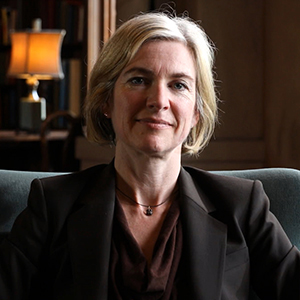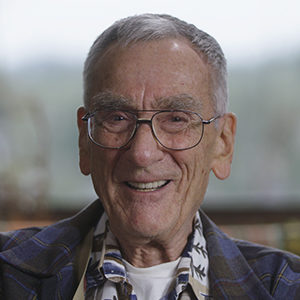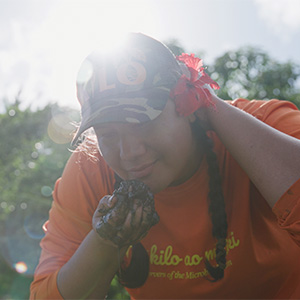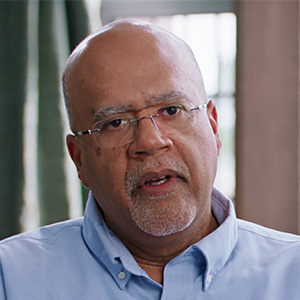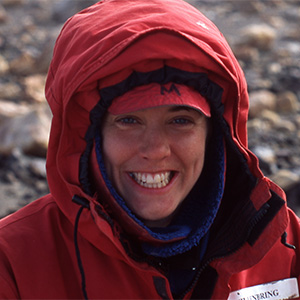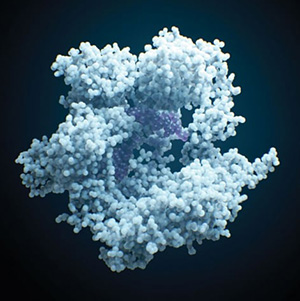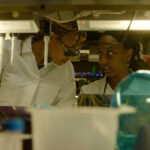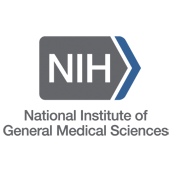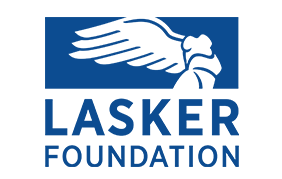Rodolphe Barrangou, Ph.D.: My lab would say, “Rodolphe, your car is on Twitter.” I’m like, “What are you talking about, my car’s on Twitter?”
Like before 2013 nobody would know what CRISPR is. Now everybody knew what CRISPR was. As a firsthand witness an apostle the gospel of CRISPR, it’s beautiful, complex, compelling, unbelievable.
I’ve always been fascinated with the science that goes into food. Food is fun, you know, I mean, who doesn’t like food? Things like cocoa get fermented to make chocolate. Things like cabbage get fermented to make kimchi. And my personal favorite is the bacteria that ferments milk into tasty dairy products like yogurt and cheese. It’s fascinating. It’s exciting. You can let something grow for a couple of hours and see liquid milk turn into this solid matrix that you can scoop out.
There’s things happening, you know, before your eyes at human scale.
Back in the day I was working with a company called Danisco. It’s a Danish food ingredient company that doesn’t have a history of publishing a lot of scientific literature, doesn’t really care about scientific dissemination of knowledge, but it’s the world leader in manufacturing and formulating cultures to ferment dairy products into things like cheese and yogurt.
There are many challenges to making good yogurt and good cheese. One of the inconveniences of industrial operation is that milk is not sterile when it comes to bacteria. It’s also not sterile when it comes to viruses. Viruses of bacteria are called bacteriophage. If you used to be French like I used to be French, you have to say bacteriophage.
When you get a strain that makes great cheese, great yogurt that gets slaughtered by a virus, you have to do what’s called retiring the strain. This strain may make the best yogurt in the world, but it gets slaughtered all the time. Industrially you can’t sell it. So a key area of focus for dairy cultures company like Danisco is to develop great cultures that are resistant to bacteriophage.
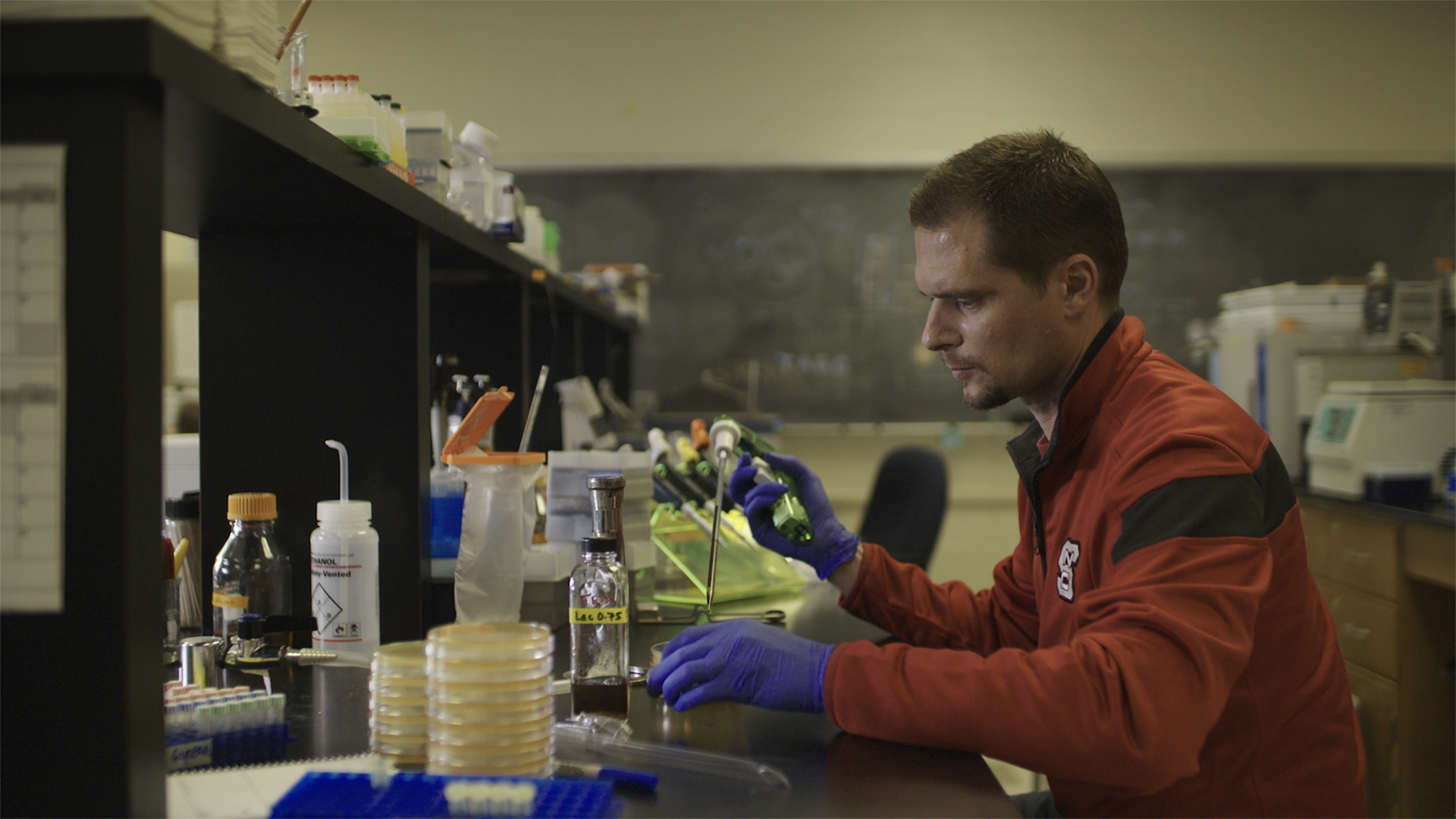
So what scientists do is take a host, the bacterium is a host, expose it to the virus. The virus comes in and kills the large majority, but there’s a small subset of the population of bacteria that will make it. We don’t know why they make it, but they make it a variant. That’s the survivor that withstood the attack of the phage coming in.
We went back to the freezers from the nineties, back all the way to the eighties, and we sequenced some of those strains. And when we compare the genome sequence of that variant to that of the parent, they look almost the exact same across the whole length of those 2 million DNA letters, they look 99.9999% identical. But there’s a difference right at the CRISPR array.
The CRISPR array is a sequential combination of a CRISPR repeats a spacer a CRISPR repeats a spacer. In between those repeats those spacer sequences are each unique. So we have two strains, repeat, spacer, repeat, spacer, repeat, spacer, repeat, all the same. And at the very end at one of the extremities, there’s one more repeat and one more spacer. Like aha moment. And that prompted us to do a series of three experiments.
We take a strain that same wild type strain that is get slaughtered by that phage and we expose that strain to the same phage. What happens? We let most of the bacteria die slaughter and we look at the CRISPR content of the ones that make it. We see repeatedly that when the strain becomes resistant, it has acquired a new spacer. And that spacer sequence the small piece of DNA that gets added on is a perfect match to the phage that was used to do it.
And then what we do is we go back to the host and we do the same thing with a different phage and we see the same thing. And in a kind of a cool twisted experiment, what we do is we give it a cocktail. You blend different kinds of phages together and we want to see what the host is gonna do. And the host picks up a piece of DNA from each one of those phages. This suggests that there may be a correlation between the CRISPR spacer content and the ability of the host to become resistant.
So we’re pretty psyched. It looks pretty convincing. It’s still circumstantial evidence. So you wanna show convincingly that the CRISPR spacer content determines, not correlates with, but determines sensitivity or resistance to a virus. So the first thing we do is we add one. And when you add a spacer synthetically, you become resistant. Then we do the opposite. So we go in and we take it away. And when you remove the spacer that gives the resistance, you lose the resistance. So that’s pretty convincing evidence.
So we knew at the time the CRISPR locus is accompanied by adjacent sequences, CRISPR-associated sequences called CAS genes. So the question is if we tinker with those CAS genes, does it have an impact on the function of CRISPR in providing resistance against the virus?
Next to this CRISPR array there’s four genes, and in the first gene eventually will become known as the infamous CAS 9. We show that when you inactivate CAS 9 genetically you lose the ability to be resistant to the virus though the CRISPR spacer is there. The spacer just being there is not enough. This implicates CAS 9 in immunity. We now know that you need to have the spacer, but you also need to have CAS 9 for the spacer to be valuable.
And the second gene we knock out, CSN 2, we don’t impact resistance. When you inactivate CSN 2 you lose the ability to acquire new spacers. We show that the CAS proteins are necessary for both immunity to be expressed, but, also, for immunization to occur.
By tinkering with this one element we’ve broken the CRISPR. I’m so excited. I can’t believe it. Like that’s that. That’s cool like that’s cool.
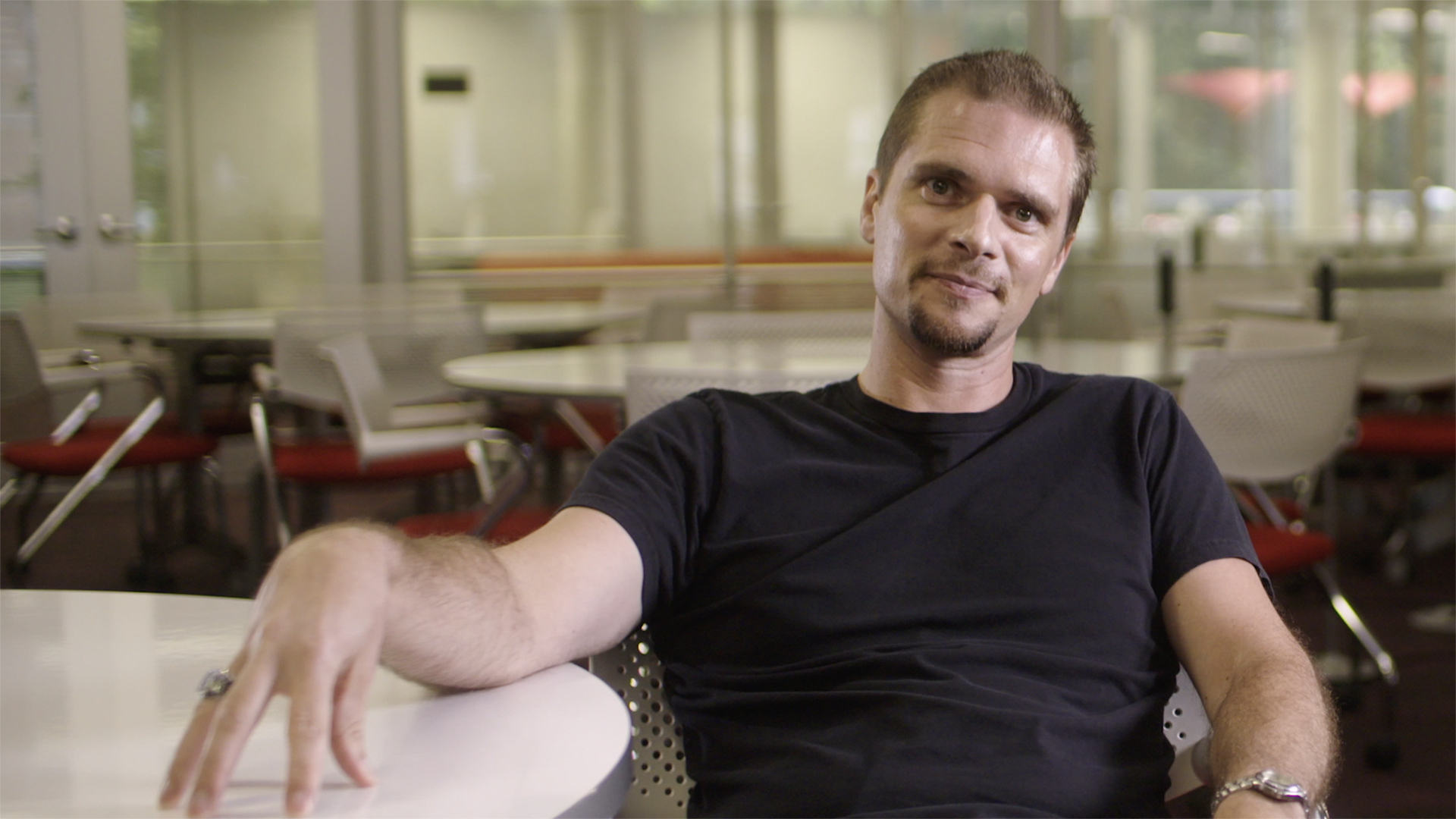
We were the first to show CRISPR is the adaptive immune system in bacteria. We publish our paper in March 2007 the first CRISPR paper in high profile journal. At the time our paper came out, we are a bunch of nobody’s working at this Danish food ingredient company. Authors who’s never published anything worthy of a journal like this, talking about a topic that nobody cares about. And now people care. CRISPR has garnered the interest of the whole world beyond scientists.
Oftentimes science is like building a mountain. You start with you know the foundation and then you build it one layer at a time. And maybe the person sitting at the very top of the mountain isn’t the one that laid the foundation. I’m one of the three or four people who’ve been there since the beginning. Keep calm CRISPR on and do your own thing.
Barrangou R, Fremaux C, Deveau H, Richards M, Boyaval P, Moineau S, Romero DA, Horvath P. CRISPR provides acquired resistance against viruses in prokaryotes. Science. 2007 Mar 23;315(5819):1709-12. doi: 10.1126/science.1138140. PMID: 17379808.
iBiology’s CRISPR-Cas Technology resources (videos)
Explorer’s Guide to Biology CRISPR-Cas: From Bacterial Adaptive Immunity to a Genome Editing Revolution (primarily text)
Producers: Sarah Goodwin, Rebecca Ellsworth
Cinematographer: Derek Reich
Editor: Rebecca Ellsworth
Graphics: Chris George, Maggie Hubbard
Assistant Camera: Gray McClamrock
Drone aerials: Travis Jack
Supervising Editor: Regina Sobel
Field Producer: Meredith DeSalazar
Interview by: Adam Bolt
Associate Producer: Shelley Elizabeth Carter
Executive Producers: Shannon Behrman, Sarah Goodwin, Elliot Kirschner
